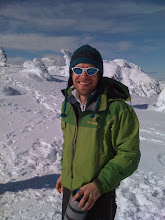Global warming is changing ice conditions off Alaska’s coast so much that elders and hunters can’t rely on their expertise to keep them safe, Northwest Arctic Borough Mayor Siikauraq Martha Whiting told a statewide commission Thursday.
“It’s almost like some of the traditional knowledge is null and void,” she said.
Ice conditions are “completely changing,” and people are a lot more cautious now when traveling on the ice, she said.
A few years ago, experienced hunters died when they went out on ice that wasn’t as thick as it once was.
Whiting urged members of the Alaska Climate Impact Assessment Commission to pay attention to traditional knowledge and teach today’s youth about climate change.
“It’s something that you watch on CNN,” she said, “But it’s something that’s right in our face.” Having an Inupiaq word for it might help convey the urgency, she added.
The climate impact commission, which was formed last year by state lawmakers, hosted an all-day meeting Thursday in Kotzebue to take public testimony and hear from local officials and researchers. It has also held hearings in Fairbanks, Juneau and Anchorage.
Jim Dau, a wildlife biologist for the Department of Fish and Game, described the changes he’s seen in nearly two decades of working out of Kotzebue.
“We’ve seen really weird things the last few years with caribou migrations,” he said.
The Western Arctic Caribou Herd heads south about the same time each year, but sometimes it moves quickly and other times slowly, he said. Management problems are popping up because caribou sometimes aren’t around when hunting is allowed.
Hot summers and mild winters with periods of icing could lead to declines in the herd, he said.
Dau also talked about a new phenomenon he called “tundra slumps.” Near the ocean, along rivers, and in places with any kind of grade, he’s seen patches of earth slide as if the ground below had turned to gelatin. “I didn’t see any of them before four years ago,” he said. “Now they’re common.”
One slump left a patch of willow in the ocean, he said. Another one just about shut off the Selawik River and filled miles of the river with silt for years. Slumps in the foothills leave the tundra folded up like an accordion and seem to affect vegetation and hydrology.
Dau said it would take years to compile hard data on some of the changes, and he urged commission members to seek out observations from people on the ground.
Officials from the villages of Newtok and Kivalina described how coastal erosion is forcing them to relocate their villages.
Stanley Tom, the tribal administrator of Newtok, said his village has already lost more than half a mile of shore, its barge landing, and its old dump site. Houses flood regularly.
“The only high land we have is the school area right now, and then the airport area,” he said.
The village has already chosen a new site, called Mertarvik, or “getting water from the spring,” and drawn up plans for the new village, he said. But it’s running into problems because it can’t get an airport built until it has a post office and can’t get a school built without having a certain number of students.
Colleen Swan, the tribal administrator of Kivalina, said there’s been a push to move her village for decades, mostly because of overcrowding and the desire to have a water and sewer system.
“Erosion was somewhere in the bottom, and now today it is the major reason why we are moving,” she said. The village needs to move soon but is butting heads with the U.S. Army Corps of Engineers over where it should move, said Enoch Adams, Jr., a member of the Kivalina Relocation Planning Committee.
Commission members toured the village Wednesday.
During the public comment period, residents from a wide range of villages talked about the changes they were seeing and the need to do something.
“The country and the land is thawing,” Point Hope resident Earl Kingik said.
The climate impact assessment commission was formed to study how climate change was already affecting Alaska and to recommend policy changes to deal with the changes. It’s comprised of four state lawmakers and seven members of the public with wide-ranging expertise.
Rep. Reggie Joule, a Democrat from Kotzebue who helped create the commission, said Thursday the meetings in rural Alaska were aimed at putting human faces to the changes and challenges on the ground.
“We’re getting good local info that really solidifies a lot of what science is telling us,” he said. “The key is, how do we harness that?”

No comments:
Post a Comment